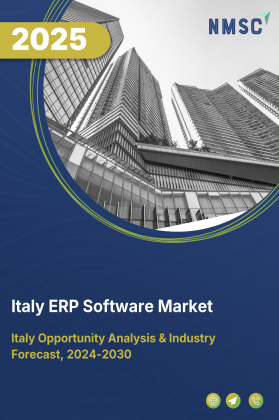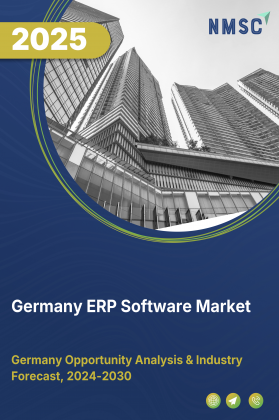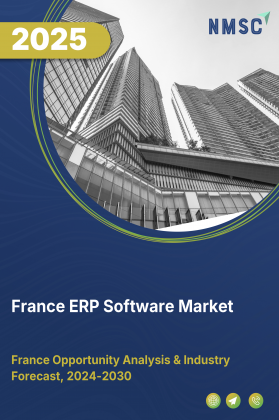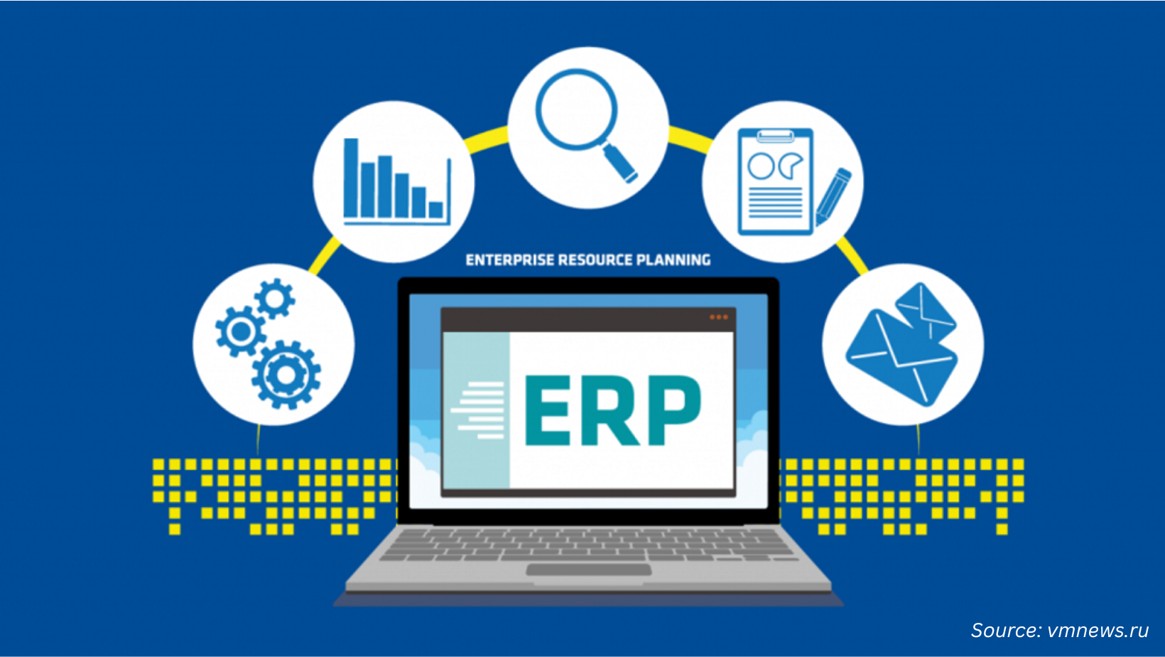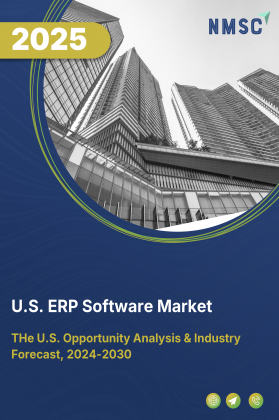
U.S. ERP Software Market by Component (Software, and Services), Deployment (On-Premise, Cloud, and Hybrid), Business Function (Enterprise Asset Management, Financial Management, Human Capital Management, and Others), Application (Manufacturing, BFSI, Healthcare, Retail & Distribution, Government, IT & Telecom, and Others), and End Users (Small & Medium Enterprises, and Large Enterprises) – Trends and Forecast, 2025–2030.
Industry: ICT & Media | Publish Date: 16-Oct-2025 | No of Pages: N/A | No. of Tables: N/A | No. of Figures: N/A | Format: PDF | Report Code : IC3598
U.S. ERP Software Market Report - Comprehensive Overview | |
| Study Period | -5 - |
| Base Year for Estimation | 2024 |
| Forecast Data Period | 1 - |
| Market Size in Base Year | |
| Market Size in Forecast Year | |
| Growth Rate 2026 - | % |
| Growth Factors | |
| Report Coverage | The report provides insights on market size, forecasts, emerging trends, competitive landscape, key segments, growth opportunities, recent developments, and strategic recommendations to help stakeholders make informed business decisions. |
| Segments Covered | |
| Countries Covered | 1 |
| Geographical Analysis | THe U.S. |
| Companies Profiled | Top 10 companies |
| Competitive Landscape | |
| Market Share | Available for top 10 companies |
| Customization Scope | |
| Purchase Option | |
Industry Outlook
The U.S. ERP Software Market size was valued at USD 27.60 billion in 2024 and is projected to grow to USD 31.18 billion by 2025. Additionally, the industry is expected to continue its growth trajectory, reaching USD 42.46 billion by 2030, with a CAGR of 6.37% from 2025 to 2030.
The U.S. ERP software market is experiencing strong growth, fueled by the expanding manufacturing sector’s demand for workflow optimization, supply chain efficiency, and regulatory compliance. Major ERP vendors are driving innovation through scalable, AI-powered solutions that reduce operational costs and increase efficiency. However, challenges such as system complexity, legacy infrastructure, and limited internal resources, especially among small and mid-sized businesses, are hindering broader adoption. Meanwhile, IoT integration is unlocking new opportunities, enabling real-time monitoring and predictive analytics that enhance ERP functionality and appeal across manufacturing and logistics sectors.
Expanding Manufacturing Sector Driving the U.S. ERP Software Market Demand
The rapid expansion of the manufacturing sector is significantly boosting the ERP software market adoption in United States. As of Q4 2024, manufacturing contributed USD 2.94 trillion to the U.S. economy, 10% of national GDP, and employed over 13 million people across more than 244,000 establishments. With 74% of these being small firms, ERP systems are essential to manage complex workflows, optimize supply chains, and ensure compliance with regulatory standards. The growing need for real-time analytics and integration with advanced technologies such as AI and IoT is reinforcing ERP adoption to increase operational efficiency and global competitiveness.
Vendor Innovation Accelerating the U.S. ERP Software Market Expansion
The presence of major ERP vendors such as SAP, Oracle, Microsoft Dynamics 365, and Opkey is accelerating innovation and accessibility in the U.S. ERP software industry. These companies are launching advanced, scalable, and sector-specific solutions tailored to evolving enterprise demands. In February 2025, Opkey introduced its ERP Lifecycle Optimization Platform powered by Argus AI, featuring agentic virtual agents that automate ERP configuration, testing, training, and support, reducing costs by up to 50% and testing time by 85%. Additionally, Clients First redesigned its web platform to improve access to ERP tools for growing businesses, demonstrating how vendor-led innovation is expanding ERP usage across industries.
System Complexity and Resource Constraints are Limiting ERP Adoption
Integrating ERP systems with outdated legacy infrastructure remains a major challenge, especially for small and mid-sized businesses. Frequent system updates, high cybersecurity demands, and complex customization requirements across diverse industries place significant strain on internal resources. Coupled with intense sector competition, such as in intralogistics, these hurdles limit the speed and scale of ERP implementation, slowing overall market growth despite strong demand.
IoT Integration Enhances ERP Capabilities, Unlocking New Market Opportunities
The integration of Internet of Things (IoT) technology with ERP systems is emerging as a significant growth driver, enabling real-time data visibility and advanced operational control. IoT-enabled ERP platforms empower businesses to track inventory, monitor equipment health, and predict maintenance needs, greatly enhancing efficiency in sectors such as manufacturing and logistics. In March 2025, Epicor Software Corporation introduced Epicor Kinetic 2025, a next-generation ERP solution featuring advanced IoT integration for real-time monitoring and predictive maintenance in manufacturing environments. This innovation highlights the transformative potential of IoT in expanding ERP functionalities and underscores the growing demand for connected, intelligent enterprise solutions.
Competitive Landscape
The market players operating in the U.S. ERP software industry include SAP SE, Microsoft Corporation, Oracle NetSuite, Sage Group plc, Workday, Inc., Xero Limited, Epicor Software Corporation, Deltek, Inc., Odoo, SYSPRO, Acumatica, Inc., Infor, Unit4, Ramco Systems, Abas Software AG and others.
U.S. ERP Software Market Key Segments
By Component
-
Software
-
Service
By Deployment
-
On Premise
-
Cloud
-
Hybrid
By Business Function
-
Enterprise Asset Management (EAM)
-
Record Assets (Asset Mgmt)
-
Analytics & BI
-
Disposal of Assets
-
Others
-
-
Financial Management System
-
Core Financials
-
Corporate Performance Mgmt (CPM)
-
Financial Consolidation
-
Others
-
-
Human Capital Management (HCM)
-
Talent Management
-
Administrative HR
-
Workforce Management
-
Others
-
-
Manufacturing and Operations
-
Production Planning and Scheduling Products
-
Production Ops and Control Products
-
Manufacturing Information Mgmt Products
-
Others
-
-
Supply Chain Management (SCM)
-
Inventory management
-
Warehouse management
-
Transportation management
-
Procurement
-
Contract Management
-
-
Others
By Application
-
Manufacturing
-
BFSI
-
Healthcare
-
Retail & Distribution
-
Government
-
IT & Telecom
-
Construction
-
Aerospace Defense
-
Other Industries
By End Users
-
Small and Medium-Sized Enterprise
-
Large Enterprise
Key Players
-
Microsoft Corporation
-
Oracle NetSuite
-
Sage Group plc
-
Xero Limited
-
Epicor Software Corporation
-
Deltek, Inc.
-
Odoo
-
SYSPRO
-
Acumatica, Inc.
-
Infor
-
Unit4
-
Ramco Systems
-
Abas software AG
Report Scope and Segmentation:
|
Parameters |
Details |
|
Market Size in 2025 |
USD 31.18 Billion |
|
Revenue Forecast in 2030 |
USD 42.46 Billion |
|
Growth Rate |
CAGR of 6.37% from 2025 to 2030 |
|
Analysis Period |
2024–2030 |
|
Base Year Considered |
2024 |
|
Forecast Period |
2025–2030 |
|
Market Size Estimation |
Billion (USD) |
|
Growth Factors |
|
|
Companies Profiled |
15 |
|
Market Share |
Available for 10 companies |
|
Customization Scope |
Free customization (equivalent up to 80 working hours of analysts) after purchase. Addition or alteration to country, regional, and segment scope. |
|
Pricing and Purchase Options |
Avail customized purchase options to meet your exact research needs. |

















 Speak to Our Analyst
Speak to Our Analyst



